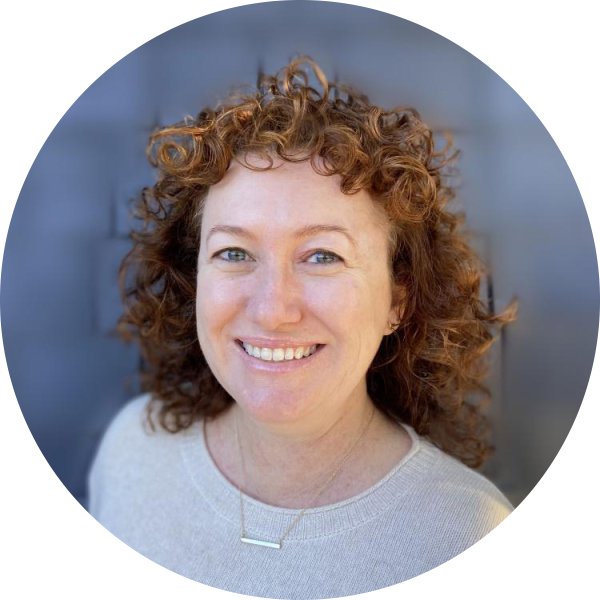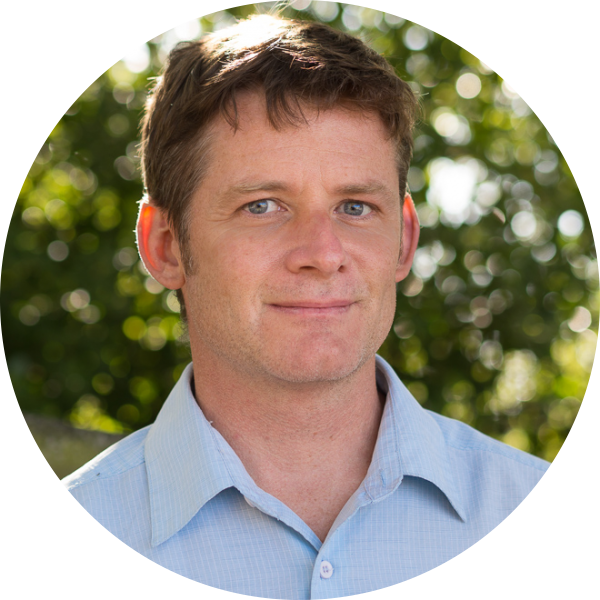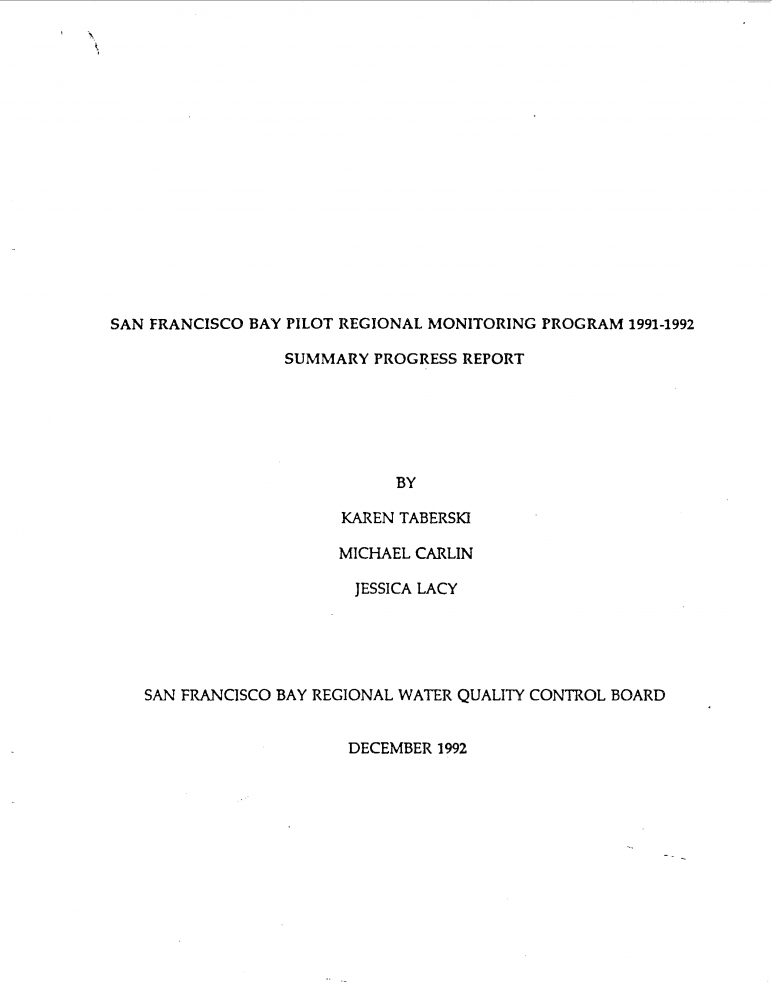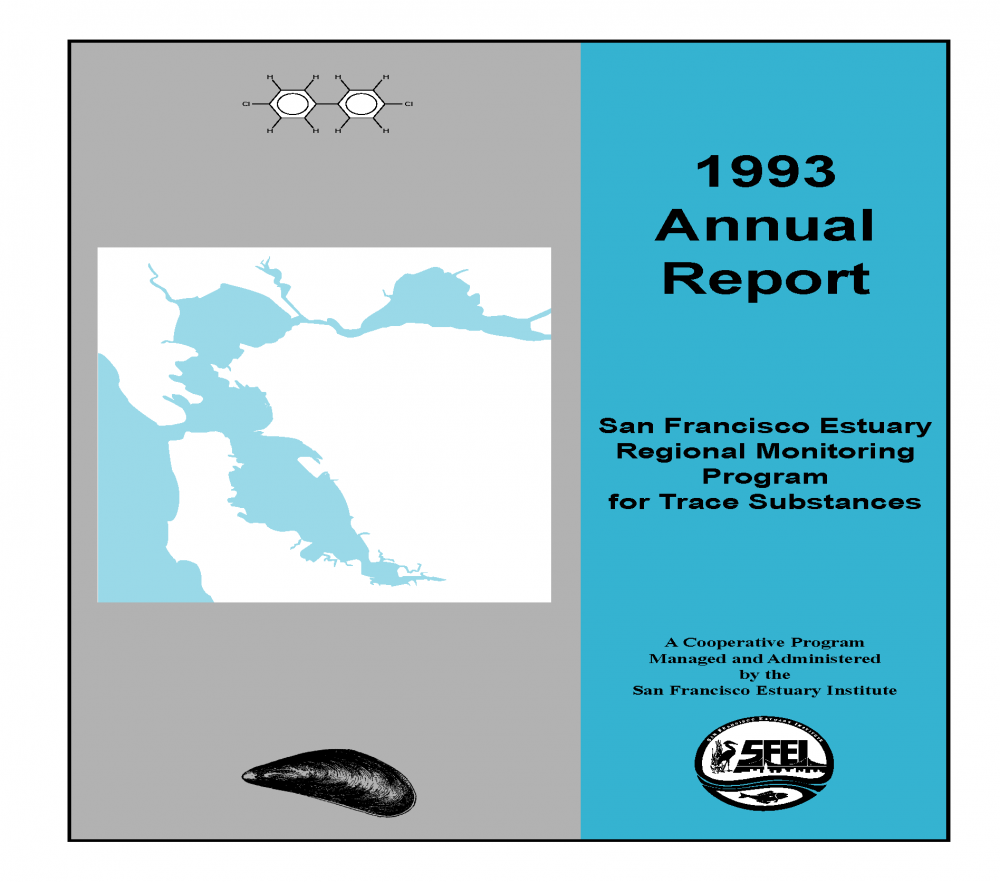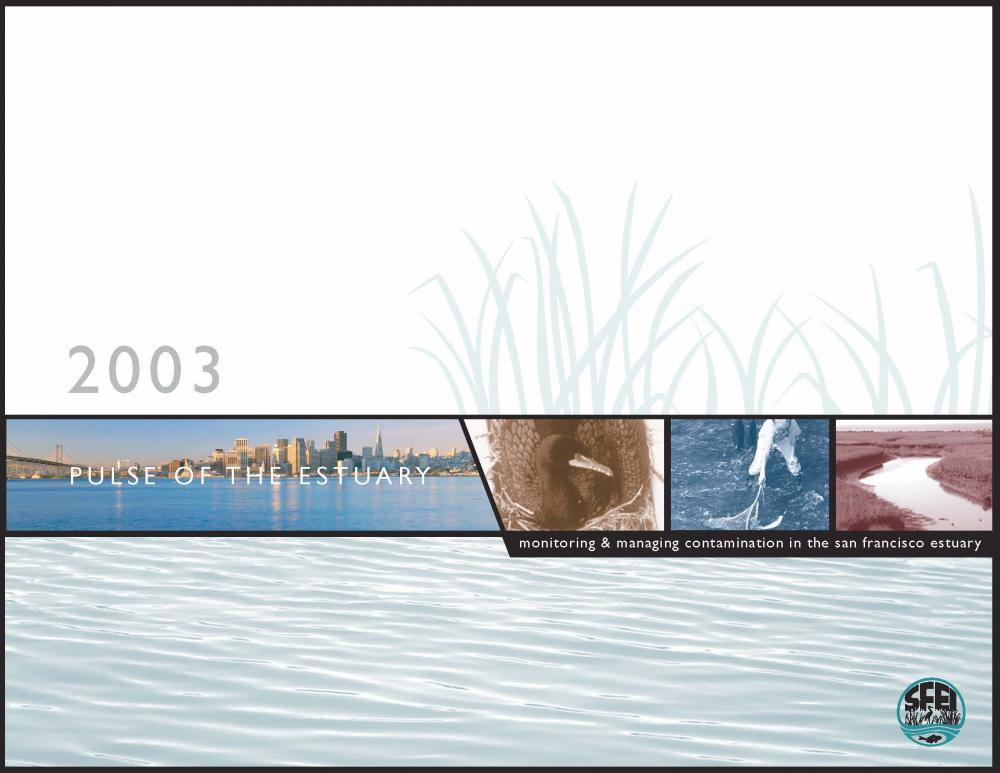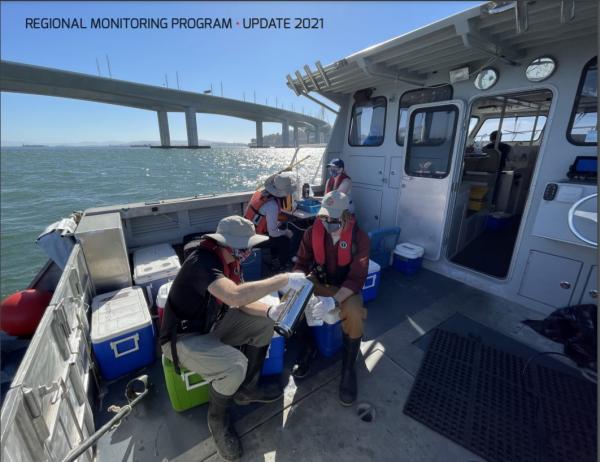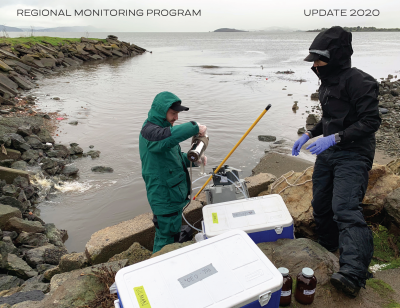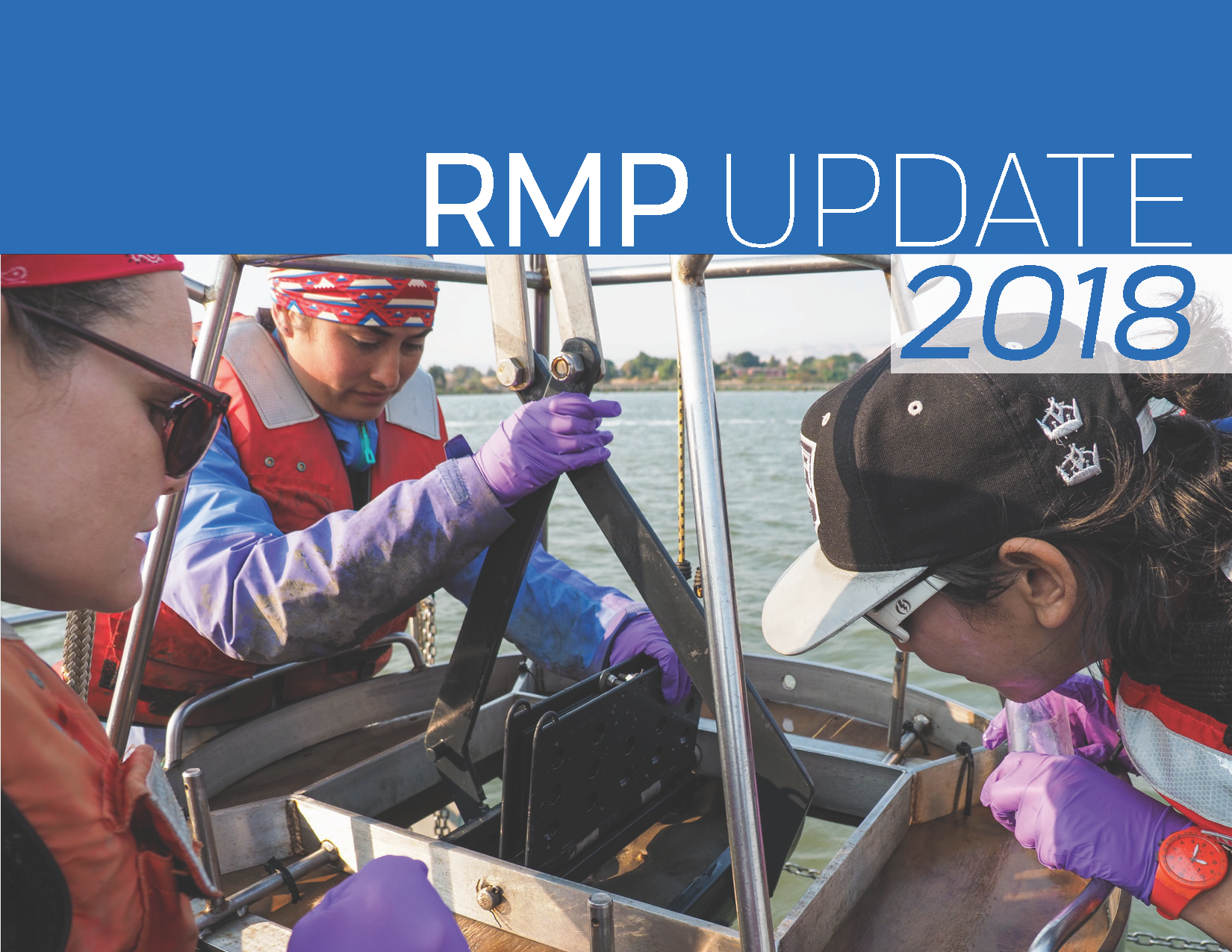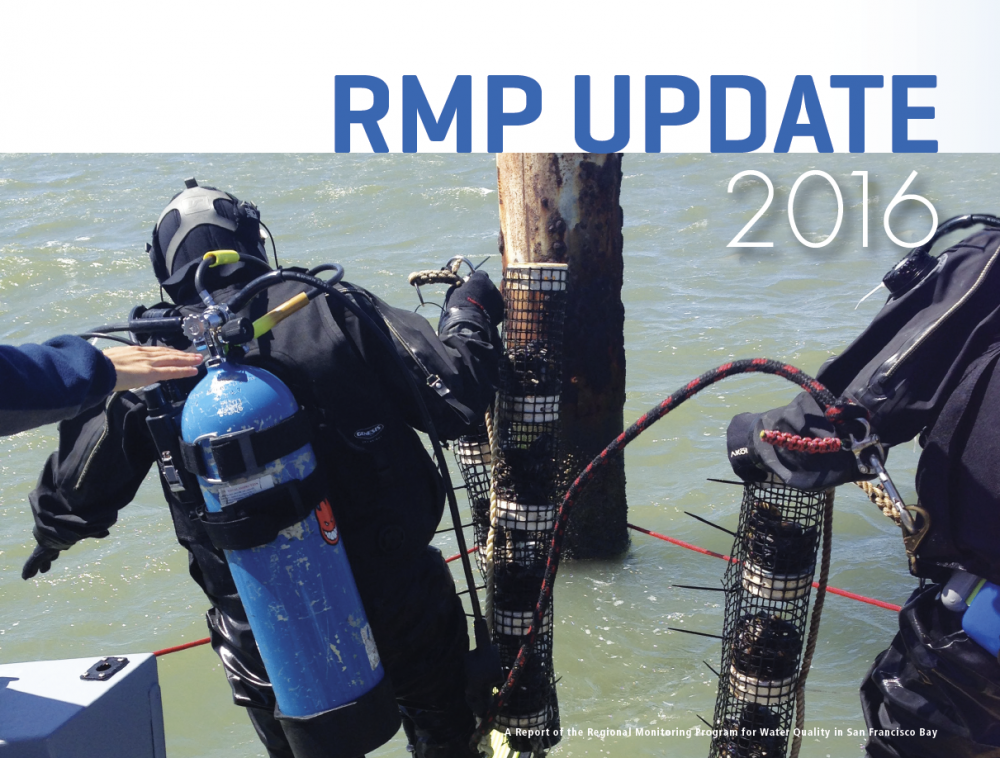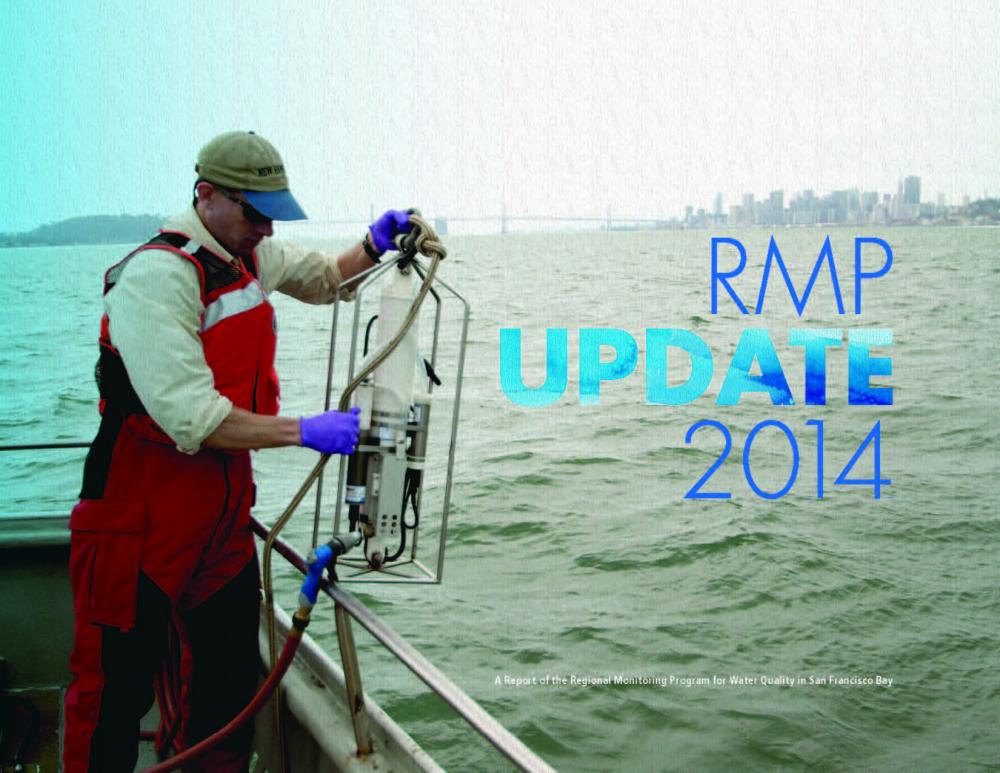- RMP Monitoring Plans and Reports
- 2023 Status and Trends Monitoring - Sampling Plans and QA Reports
- 2019 Selenium Intercomparison Memo
- Status & Trends Design Revision Report (Coming Soon)
- Copper Rolling Average
- Cyanide Rolling Average
- Dredged Material Testing Thresholds for San Francisco Bay Area Sediment
- Status & Trends: Procedures for the Collection and Storage of Environmental Samples in the RMP Specimen Bank
- Status & Trends NIST Sample Archive Documentation
- RMP Sampling Station Maps 2019 Quality Assurance Program Plan
- Field Operations Manual
- 2019 Status and Trends Monitoring - Sampling Plans and QA Reports
- 2018 Status and Trends Monitoring - Sampling Plans and QA Reports
- 2017 Status and Trends Monitoring - Sampling Plans and QA Reports
- 2016 Status and Trends Monitoring - Sampling Plans and QA Reports
- Changes to the RMP
- Dioxin Monitoring Status & Trends Monitoring Design - 2018 Update
- Table of RMP Sampling Plans, QAPPs, Cruise Reports, and QA Summaries By Matrix & Year
Regional Monitoring Program for Water Quality in San Francisco Bay
Projects Related to the Regional Monitoring Program for Water Quality in San Francisco Bay
 Archive Sample Tool
Archive Sample Tool
The Archive Sample Tool provides a web interface that SFEI researchers can use to browse the RMP archives when considering using archive material for a study. The RMP has been collecting archive samples during each sampling event for sediment, bivalve, fish and birds since the early 1990's. These samples are available to SFEI researchers with RMP Program Manager approval, and can be requested directly from the tool.
Publications related to the Regional Monitoring Program for Water Quality in San Francisco Bay
The Institute has collectively produced more than 1300 reports, articles, and other publications over the course of its 24-year existence. The following list represents those publications associated with this individual program and its focus areas.
Year of Publication: 2024
. 2021 Update to Copper Rolling Average. Richmond, CA: San Francisco Estuary Institute; 2024 . Report No.: 1164.  (556.45 KB)
(556.45 KB)
. 2021 Update to Cyanide Rolling Averages. Richmond, CA: San Francisco Estuary Institute; 2024 .  (552.88 KB)
(552.88 KB)
. 2024 Quality Assurance Program Plan for The Regional Monitoring Program for Water Quality in San Francisco Bay. Richmond, CA: San Francisco Estuary Institute; 2024 . Report No.: 1169.  (4.07 MB)
(4.07 MB)
. Water Year 2024 RMP Near-Field Water Sampling and Analysis Plan. 2024 . Report No.: 1154.  (12.85 MB)
(12.85 MB)
Year of Publication: 2023
. 2023 Bay Prey Fish and Near-field / Margins Sediment Sampling and Analysis Plan. Richmond, CA: San Francisco Estuary Institute; 2023 . Report No.: 1141.  (406.78 KB)
(406.78 KB)
. 2023 RMP Dry Season Water Cruise Plan. Richmond, CA: San Francisco Estuary Institute; 2023 . Report No.: 1139.  (3.21 MB)
(3.21 MB)
. 2023 RMP Sediment Cruise Sampling and Analysis Plan. Richmond, CA: San Francisco Estuary Institute; 2023 . Report No.: 1138.  (445.99 KB)
(445.99 KB)
2023 Status and Trends Monitoring - Sampling Plans and QA Reports. 2023 .  (3.21 MB)
(3.21 MB) (13.36 MB)
(13.36 MB) (445.99 KB)
(445.99 KB) (406.78 KB)
(406.78 KB)
. Conceptual Understanding of Fine Sediment Transport in San Francisco Bay. Richmond, CA: San Francisco Estuary Institute; 2023 . Report No.: 1114.  (46.2 MB)
(46.2 MB)
. Re-evaluation of the Floating Percentile Method for Deriving Dredged Sediment Screening Guidelines. Richmond, California: San Francisco Estuary Institute; 2023 . Report No.: 1143.  (3.4 MB)
(3.4 MB)
. Water Year 2023 RMP Near-Field Water Sampling and Analysis Plan. Richmond, CA: San Francisco Estuary Institute; 2023 . Report No.: 1142.  (13.36 MB)
(13.36 MB)
Year of Publication: 2022
. 2021 RMP Water Cruise Report. Livermore, CA: Applied Marine Sciences; 2022 . Report No.: 1098.  (1.52 MB)
(1.52 MB)
. Strategy for In-Bay Fate Modeling to Support Contaminant and Sediment Management in San Francisco Bay. Richmond, California: San Francisco Estuary Institute; 2022 . Report No.: 1090.  (2.81 MB)
(2.81 MB)
Year of Publication: 2021
. 2019 Update to Copper Rolling Average. 2021.  (1.01 MB)
(1.01 MB)
- 1 of 7
- next ›
Since its inception in 1993, the Regional Monitoring Program for Water Quality in San Francisco Bay (RMP) has provided the information that regulators and decision-makers need to manage Bay water quality effectively. The RMP is an innovative collaborative effort between SFEI, the Regional Water Quality Control Board, and the regulated discharger community.
-
An innovative partnership
The RMP combines shared financial support, direction, and participation by regulatory agencies and the regulated community in a model of collective responsibility. The RMP has established a climate of cooperation and a commitment to participation among a wide range of regulators, dischargers, industry representatives, non-governmental agencies, and scientists. The RMP provides an open forum for interested parties to discuss contaminant issues facing the Bay.
-
An adaptive, long-term program of study in support of management
Stable funding has enabled the RMP to develop and implement long-term monitoring plans. In addition, Special Studies provide an opportunity to adapt to changing management priorities and advances in scientific understanding. RMP committees and workgroups meet regularly to keep the Program efficient, focused on the highest priority issues, and to ensure that RMP science is sound. The RMP has continually adapted and improved since its inception in 1993.
- A high quality body of knowledge
The RMP has produced a world-class dataset on estuarine contaminants. RMP monitoring determines spatial patterns and long-term trends in contamination through sampling of water, sediment, bivalves, bird eggs, and fish, and evaluates toxic effects on sensitive organisms and chemical loading to the Bay. The Program combines RMP data with data from other sources to provide for comprehensive assessment of chemical contamination in the Bay.
- A portal to information about contamination in San Francisco Bay
The RMP provides information targeted at the highest priority questions faced by Bay water quality managers. The RMP produces summary reports (The Pulse of The Bay and RMP Update), technical reports that document specific studies and synthesize information from diverse sources, and journal publications that disseminate RMP results to the world’s scientific community. The RMP website provides access to RMP data, information products, and links to other sources of information about water quality in San Francisco Bay.
THE RMP DOCUMENT ARCHIVES
This archive contains important documents relating to the establishment and development of the RMP.
Laying the Foundations: Establishing the RMP
Status and Trends Monitoring Elements
The RMP has a long-term Status and Trends Monitoring Program that began in 1993. The monitoring design has evolved over time, including a major design evaluation and revision in 2022. The elements currently (2023) include the following, as described in the report on the 2020 design revision process (coming soon):
- Water
- Dry season (every 2 years)
- Wet season (annually as a pilot study from 2022-2024)
- Sediment
- Deep Bay (every 5 years)
- Margins (every 5 years)
- Near-field (every 5 years)
- Sport fish (every 5 years)
- Bird eggs (every 3 years)
- Prey fish (every 5 years)
- Marine mammals (pilot study in 2023-2024)
- Long-term hydrographic and suspended sediment studies by the U.S. Geological Survey (annually)
The Archive Sample Tool provides a web interface that SFEI researchers can use to browse the RMP archives when considering using archive material for a study. The RMP has been collecting archive samples during each sampling event for sediment, bivalve, fish and birds since the early 1990's. These samples are available to SFEI researchers with RMP Program Manager approval, and can be requested directly from the tool.
Status & Trends Design Revision Report (Coming Soon)
RMP Sampling Station Maps
Changes to the RMP
Status & Trends Monitoring Design - 2018 Update
Melwani power analysis report
Lowe et al Redesign report
Year of Publication: 2024
Year of Publication: 2023
Year of Publication: 2022
Year of Publication: 2021
Year of Publication: 2020
Year of Publication: 2019
Year of Publication: 2018
Year of Publication: 2017
Year of Publication: 2016
Year of Publication: 2015
Year of Publication: 2014
Year of Publication: 2013
Year of Publication: 2011
Year of Publication: 2001
Year of Publication: 1987
Approximately one-third of the RMP budget each year is allocated to an array of special studies on a wide variety of topics. The RMP workgroups develop the multi-year plans for the studies and provide peer review. More information is available on the pages for the RMP workgroups.

Budget: Expenses 2023
In 2023, 75% of the budget is allocated on Status & Trends and Special Studies. Quality assurance and data systems, reporting, and communications are each approximately 5% of the budget. Governance meetings (9%) are critical to ensure that the RMP is addressing stakeholder needs and conducting studies that include peer-review from project planning through report preparation. Finally, 8% of the budget is needed for program management, including fiduciary oversight of contracts and expenditures.

The Regional Monitoring Program for Water Quality in San Francisco Bay is an innovative collaboration of the San Francisco Bay Regional Water Quality Control Board, the regulated discharger community, and the San Francisco Estuary Institute. It provides water quality regulators with information they need to manage the Bay effectively. The Program issues a report each year, the Pulse of the Bay in even years and the RMP Update in odd years.
The purpose of The Pulse is to make the most important information available on water quality in the Bay accessible to water quality managers, decision-makers, scientists, and the public. The theme of the 2022 Pulse is "50 Years After the Clean Water Act." Nine different individuals or groups have contributed perspectives on progress to date and challenges ahead. This Pulse also includes summaries, with a historical perspective, on the major water quality parameters of concern in the Bay. You can access the Pulse by clicking here.
You can request a hard copy of the Pulse by clicking here, or if you have comments or questions, please contact Jay Davis: [email protected]
The RMP Update provides a concise overview of recent RMP activities and findings, and a look ahead to significant products anticipated in the next two years.
Previous Pulses:

2023 RMP Annual Meeting
Many thanks to those of you who participated in our Annual Meeting on Thursday. We greatly enjoyed the opportunity to share some of the latest findings and plans for the RMP, to learn from the informative presentations of our guest speakers, and to think about the questions and comments from the discussion sessions.
The 30th RMP Annual Meeting was held on Thursday October 12 at the David Brower Center in Berkeley, CA. The meeting featured reflections from RMP Steering Committee Chair Tom Mumley on his three decades of involvement in the Program, as well as updates on the science and management of emerging contaminants, nutrients, and sediment. The meeting agenda is posted here. A fantastic collection of photos of the festivities taken by our excellent photographer, Shira Bezalel (shirabezalelphotography.com), is also available at this link.
For those of you who were at the meeting, we would greatly appreciate it if you could take a few minutes to complete a brief survey about the meeting. We had some technical difficulties with the links and audio for the remote attendees and will work to correct those next year.
We welcome any other comments on the meeting and meeting materials. Please email Jay Davis ([email protected]).
2023 RMP Update Now Available!
The 2023 RMP Update is now available for download from the RMP Update webpage! This report provides a concise overview of recent RMP activities and findings, and a look ahead to significant products anticipated in the next two years. This edition features an article by Dr. Rebecca Sutton that provides an overview of the RMP's groundbreaking work on contaminants of emerging concern in urban runoff.
If you are interested in obtaining a hard copy of the report please contact Jay Davis: [email protected]
Welcome & Session 1: Regional Monitoring Program Highlights
Welcoming Statement; Tom Mumley, San Francisco Bay Water Board
Reflections on 30+ Years of Regional Monitoring; Tom Mumley, San Francisco Bay Water Board
RMP 2023 Highlights; Amy Kleckner, San Francisco Estuary Institute
Discussion - Moderated by Karin North, City of Palo Alto
Session 2: Sediment and Nutrients
San Francisco Bay August 2022 Harmful Algal Bloom; Dave Senn, San Francisco Estuary Institute
Determining Protective Dissolved Oxygen Levels in SF Bay Sloughs; Ariella Chelsky, San Francisco Estuary Institute
Sediment Loads at the Climate Extremes; Alicia Gilbreath, San Francisco Estuary Institute
Discussion - Moderated by Ian Wren, Baykeeper
Session 3: PFAS
PFAS in Bay Fish: Driver of Concern; Jay Davis, San Francisco Estuary Institute
Investigation of PFAS Sources to Municipal Wastewater; Diana Lin, San Francisco Estuary Institute & Lorien Fono, Bay Area Clean Water Agencies
Cosmetics Contribute to the PFAS Load at Wastewater Treatment Plants in California; Simona Balan, California Department of Toxic Substances Control
Discussion - Moderated by Maggie Monahan, San Francisco Bay Water Board
Session 4: Contaminants of Emerging Concern in Stormwater Water
Screening Stormwater for Contaminants of Emerging Concern; Rebecca Sutton, San Francisco Estuary Institute
Tire Derived Contaminants in San Francisco Bay; Ezra Miller, San Francisco Estuary Institute
Current and Upcoming Activities of the Safer Consumer Products Program; Jen Jackson California Department of Toxic Substances Control
Discussion - Moderated by Chris Sommers, EOA Inc.
Previous Meetings:
|
|
|
|

The Regional Monitoring Program for Water Quality in San Francisco Bay is an innovative collaboration of the San Francisco Bay Regional Water Quality Control Board, the regulated discharger community, and the San Francisco Estuary Institute. It provides water quality regulators with the information they need to manage the Bay effectively. The RMP produces two types of summary reports: The Pulse of the Bay and the RMP Update. The Pulse focuses on Bay water quality and summarizes information from all sources. The RMP Update has a narrower and specific focus on highlights of RMP activities.
The purpose of the RMP Update is to provide a concise overview of recent RMP activities and findings, and a look ahead to significant products anticipated in the next two years.
The report includes:
- a brief summary of some of the most noteworthy findings of this multifaceted Program;
- a description of the management context that guides the Program; and
- a summary of progress in, and plans for, addressing priority water quality topics.
Click Here for a PDF of the 2023 RMP Update.
If you have comments or questions please contact Jay Davis ([email protected]).You can request a physical copy of the Update by filling out this form.
Previous RMP Updates:
Find an interactive, eBook version of the 2014 RMP Update here
Estuary News, a publication of the San Francisco Estuary Partnership, had been reporting San Francisco Bay, Delta and watershed news for over 25 years, and won an award for excellence in 2011. This 12-page mini-magazine came out four times a year on paper and in PDF. It covered everything from restoration and conservation to the water wars, and offers insider information on the latest debates, regulations and science on contaminants, endangered species and invasives.
Though the Clean Water Act did an amazing job of reducing wastewater and stormwater pollution of the San Francisco Estuary, some contaminants remain thorny problems. Legacy pollutants, emerging contaminants, microplastics, and nutrients have become a particular challenges for the Estuary. Recurring topics in our Estuary News stories include plastics, mercury, emerging contaminants (PBDE, PFOS, BPA, etc), fish consumption, and the findings of the Bay’s Regional Monitoring Program (RMP). Coverage also explored what to do about polluted runoff (see Greening Stormwater). The Bay RMP thanks Estuary News for all the work and coverage it has been able to share on these issues.
The Bay RMP contributed to the production of Estuary News, and many articles feature the latest Bay RMP findings:
- Oct 2022 - Sharing Science Across Barriers
- Oct 2022 - Drought Strains Stormwater Monitoring Endeavors
- Jun 2022 - Bagman for Bay Mussels
- Feb 2022 - West Coast Salmonids All Tired Out?
- Feb 2022 - Hatchery Delta Smelt Released to Wild
- Oct 2021 - Tracking Natural Nitrogen Removal
- Jun 2021 - Bay Fish Still Not Good Eating
- Mar 2021 - Sediment Paparazzi
- Dec 2020 - Virtual RMP Annual Meeting Real-Life Success
- Sep 2020 - A Fragile Fleet
- Sep 2020 - Match Points in Stormwater Soup
- Mar 2020 - Microtrash Tiresome for Watersheds
- Mar 2020 - Regulatory Teams Coordinate
- Sep 2019 - Bay Not BPA-Free
- Jun 2019 - Next Day Delivery: PCBs, Plastics, and Mercury All in One Package
- Jun 2019 - Brinkmanship for Frail Smelt
- May 2019 - Melissa Foley’s list of concerns as the new head of San Francisco Bay’s premier water-quality program is long: microplastics, pharmaceuticals, PFASs, and other chemicals and contaminants entering the Bay through runoff and treated sewage.
- Dec 2018 - Medicating the Bay
- Sep 2018 - Dioxins Are Sticking Around Nearshore and in Fish, RMP Reports
- Jun 2018 - Supply Side Synthesis
- Mar 2018 - Scrutinizing the Margins
- Dec 2017 - Non-Sticks Stick Around
- Oct 2017 - Sturgeon Surgeons
- Sep 2017 - Beacon not Burden
- Aug 2017 - The Second Signal: Guadalupe River Flood Monitoring
- Aug 2017 - Sport Fish Still Not Squeaky Clean
- Dec 2016 - The Dirt on Flea Control
- Dec 2016 - Options for Orphan Species
- Sep 2016 - Nutrient Nuances Modeled
- Jun 2016 - An Eggfull of Estuary
- Mar 2016 - Waiting for the Big One
- Dec 2015 - Unhealthy Fiber in Bay Diet
- Sep 2015 - Tracking Tiny Toxins
- Jun 2015 - Beyond the Blubber
- Jun 2015 - No Scapefish in Drought Wars
- Mar 2015 - Copper Effects on Salmon Influenced by Salinity
- Dec 2014 - Beyond the Bag Ban
- Sep 2014 - Small Fish Test Helps Target PCB Clean Up
- Jun 2014 - Freeing Fish While Locking Up Mercury
- Mar 2014 - Bay Primed for Pea Soup?
The RMP regularly issues updates to those interested in its important publications, activities, findings, meetings, and more.
To add yourself to the list, please subscribe.
Otherwise, help yourself to the list of updates issued over the years.
Year of Publication: 2024
Year of Publication: 2023
Year of Publication: 2022
Year of Publication: 2021
Year of Publication: 2020
Year of Publication: 2019
Year of Publication: 2018
Year of Publication: 2017
Year of Publication: 2016
Year of Publication: 2015
Year of Publication: 2014
Year of Publication: 2013
Year of Publication: 2012
Year of Publication: 2011
Year of Publication: 2010
Year of Publication: 2009
Year of Publication: 2008
Year of Publication: 2007
Year of Publication: 2006
Year of Publication: 2005
Year of Publication: 2004
Year of Publication: 2003
Year of Publication: 2002
Year of Publication: 2001
Year of Publication: 2000
Year of Publication: 1999
Year of Publication: 1998
Year of Publication: 1997
Year of Publication: 1996
Year of Publication: 1995
Year of Publication: 1994
Year of Publication: 1993
Year of Publication: 1992
Year of Publication: 1991
Year of Publication: 1990
Year of Publication: 1989
Year of Publication: 1988
Year of Publication: 1987
Year of Publication: 202
 Sediment is a building block of Bay geography and is the physical foundation for tidal marshes, which must vertically accrete to keep pace with sea-level rise and continue functioning as natural filters for nutrients and pollutants from urban, agricultural, and industrial runoff sources. Sediment on the Bay floor can store contaminants within interstitial waters and suspended sediment can transport contaminants throughout the Bay. In addition, suspended sediment is a key factor limiting algal blooms and eutrophication. There is a growing focus on sediment processes in the Bay, driven by the need for better information on water and sediment quality, as well as the impacts of climate change and sea-level rise to the Bay’s tidal wetlands.
Sediment is a building block of Bay geography and is the physical foundation for tidal marshes, which must vertically accrete to keep pace with sea-level rise and continue functioning as natural filters for nutrients and pollutants from urban, agricultural, and industrial runoff sources. Sediment on the Bay floor can store contaminants within interstitial waters and suspended sediment can transport contaminants throughout the Bay. In addition, suspended sediment is a key factor limiting algal blooms and eutrophication. There is a growing focus on sediment processes in the Bay, driven by the need for better information on water and sediment quality, as well as the impacts of climate change and sea-level rise to the Bay’s tidal wetlands.
In 2018, the RMP formed the Sediment Workgroup to provide technical oversight and stakeholder guidance on RMP studies addressing management and policy needs related to sediment delivery, sediment transport, dredging, and beneficial reuse of sediment within the Bay. The Sediment Workgroup includes representatives from federal and state agencies, including the U.S. Environmental Protection Agency (USEPA), U.S. Army Corp of Engineers (USACE), U.S. Geological Survey (USGS), San Francisco Bay Regional Water Quality Control Board (SFBRWQCB), and San Francisco Bay Conservation and Development Commission (BCDC), as well as representatives from ports, the dredging community, local water agencies, universities, and private consulting firms.
The scientific advisory panel for the Bay RMP Sediment Workgroup consists of two internationally renowned estuarine sediment experts:
- Dr. David Schoellhamer, USGS (retired)
- Dr. Patricia Wiberg, University of Virginia
Lead Scientist: Scott Dusterhoff
For more information, please contact Scott Dusterhoff at [email protected].
Year of Publication: 2023
Year of Publication: 2022
Year of Publication: 2021
Year of Publication: 2020
Year of Publication: 2019
 The Bay RMP fills critical science needs to assist managers in their goal of reducing harmful emerging contaminants in San Francisco Bay. Emerging contaminants are unregulated or under-regulated and not commonly monitored, yet may pose significant ecological and/or human health risks.
The Bay RMP fills critical science needs to assist managers in their goal of reducing harmful emerging contaminants in San Francisco Bay. Emerging contaminants are unregulated or under-regulated and not commonly monitored, yet may pose significant ecological and/or human health risks.
A global leader in this field, the Bay RMP has developed an emerging contaminants strategy that guides decisions on monitoring and management. Early identification of problem pollutants and quick action to prevent their spread is an optimal and cost-effective approach for protecting water quality. This is especially true in an ecosystem like the Bay, which can act as a long-term trap for persistent contaminants, with recovery taking decades or centuries when contamination is extensive.
Diligent surveillance using state-of-the-art analytical techniques has identified emerging contaminants of moderate concern for the Bay:
- PFAS, stain and water repelling chemicals widely used in industrial and consumer products
- Fipronil and imidacloprid, insecticides with significant urban uses
- Alkylphenols and alkylphenol ethoxylates, ingredients in detergents and many other products
- Bisphenols, plastic ingredients
- Organophosphate esters, flame retardants and plasticizers
A scientific advisory panel of internationally renowned experts advises the Bay RMP Emerging Contaminants Workgroup (ECWG):
- Dr. Bill Arnold, University of Minnesota
- Dr. Miriam Diamond, University of Toronto
- Dr. Lee Ferguson, Duke University
- Dr. Derek Muir, Environment and Climate Change Canada
- Dr. Heather Stapleton, Duke University
- Dr. Dan Villenueve, US EPA
Lead Scientist: Rebecca Sutton, Ph.D.
|
|
Consumption Survey Questionnaire for San Francisco Bay Subsistence Fishers | Developing a Consumption Survey Questionnaire for San Francisco Bay Subsistence Fishers |
|
|
California Pesticides: A Data Visualization Tool to Link Pesticide Use and Management to Water Quality | Despite California's data-rich environment, there are still many obstacles when trying to access and understand pesticide data at the nexus of water quality, ecological... |
|
|
Perfluoroalkyl and Polyfluoroalkyl Substances (PFAS) | A recent analysis of PFAS in the surface waters of SF Bay was conducted to understand the occurrence, fate, and potential risks to ecological and human health. Eleven of 40... |
|
|
Virtual Forum: PFAS in San Francisco Bay Fish | Virtual Forum on PFAS in San Francisco Bay Fish, February 4th, 2022 |
|
|
Contaminants of Emerging Concern Strategy | More than 100,000 chemicals have been registered or approved for commercial use in the US. |
|
|
Historical Ecology and Landscape Change in the Central Laguna de Santa Rosa | This study synthesizes a diverse array of data to examine the ecological patterns, ecosystem functions, and hydrology that characterized a central portion of the Laguna de... |
|
|
PBDEs in San Francisco Bay: A Summary Report | Polybrominated diphenyl ethers (PBDEs) are a group of flame retardant additives used in thermoplastics, polyurethane foam, and textiles. |
|
|
A Broad Scan of Bay Contaminants: Non-targeted Analysis of Bay Wildlife | A cutting edge analysis identifies low levels of five unmonitored compounds in wildlife of San Francisco Bay. Bay mussel and harbor seal samples were tested for previously... |
Year of Publication: 2023
Year of Publication: 2022
Year of Publication: 2021
Year of Publication: 2020
Year of Publication: 2019
Year of Publication: 2018
Year of Publication: 2017
Year of Publication: 2016
Year of Publication: 2015
Year of Publication: 2012
Year of Publication: 2009
Year of Publication: 2008
Year of Publication: 2007
Year of Publication: 2006
Year of Publication: 2005
Year of Publication: 2004
Year of Publication: 2003
The RMP Sources, Pathways, and Loading Workgroup (SPLWG) was formed in 1999 to produce recommendations for collection, interpretation, and synthesis of data on sources and loads of contaminants. This information is needed to support efforts to identify and eliminate pollution in the landscape, and prevent it from impacting the beneficial uses of San Francisco Bay. The first decade of work was focused on using a field-intensive monitoring program to estimate loads of PCBs, mercury, and other legacy contaminants entering the Bay. Pathways included the Sacramento and San Joaquin Rivers, urban and nonurban stormwater in the nine counties that fringe the Bay, municipal and industrial wastewater, and atmospheric deposition. With the PCB and mercury TMDLs in place and impairment assessments completed for organochlorine pesticides, PAHs, PBDEs, and dioxins/furans, the second decade focused on refining load estimates for PCBs and Hg, searching for PCB and mercury sources to municipal stormwater, and building modeling tools to estimate regional loads and temporal trends and identify high-leverage subcatchments and source areas.
Now in its third decade, the SPLWG is increasing its work on characterizing contaminants of emerging concern (CECs) in stormwater, and continuing to develop an integrated monitoring and modeling approach for both legacy contaminants and CECs to address RMP management questions more efficiently. CECs of interest include PFAS, organophosphate esters, bisphenols, and tire-related chemicals, but priorities are continuing to evolve as information is generated about sources, pathways, and the impacts of CECs on Bay beneficial uses. In concert with other workgroups and the RMP more generally, the goal is to continue to use the latest integrated monitoring and modeling tools to support improved linkages between spatial and temporal watershed loading trends and Bay beneficial use impairment and recovery.
The group is supported by scientific advisors with international reputations:
- Tom Jobes, St. Johns River Water Management District
- Dr. Jon Butcher, Tetratech
- Dr. Steven Corsi, US Geological Survey
- Dr. Robert Budd, California Department of Pesticide Regulation
- Dr. James Limbrunner, Tufts University
Lead Scientist: Alicia Gilbreath
For further information, please contact Alicia at 510-746-7308 or [email protected]
|
|
Small Tributaries Loading Strategy | The Small Tributaries Loading Strategy (STLS) is overseen by the |
Year of Publication: 2024
Year of Publication: 2022
Year of Publication: 2021
Year of Publication: 2020
Year of Publication: 2019
Year of Publication: 2018
Year of Publication: 2017
Year of Publication: 2016
Year of Publication: 2015
Year of Publication: 2010
Year of Publication: 2009
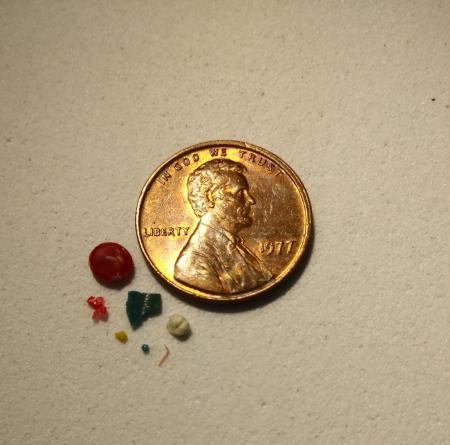 Microplastics are tiny bits of plastic smaller than five millimeters. Their small size exempts them from most current regulations, but makes them difficult to filter out or remove once they are in aquatic ecosystems. Microplastics enter the environment through human use of plastic products. Plastic doesn’t decay – it just breaks down into smaller and smaller pieces. Synthetic clothing and textiles, disposable plastic items like plastic bags and polystyrene foam packaging, tires wearing down as they are driven over roads, and littered cigarette butts can all contribute to microplastic pollution. These tiny bits of plastic may be harmful to aquatic life. Animals may breathe microplastics in via their gills or mistake microplastics for food, and these tiny plastic bits can have toxic effects. Exposure to microplastics also means exposure to the chemical pollutants within the plastics, most of which are emerging contaminants. Because microplastics can be made of many different types of plastics with many different chemistries, scientists are still working to understand the many ways they may affect aquatic organisms and human health.
Microplastics are tiny bits of plastic smaller than five millimeters. Their small size exempts them from most current regulations, but makes them difficult to filter out or remove once they are in aquatic ecosystems. Microplastics enter the environment through human use of plastic products. Plastic doesn’t decay – it just breaks down into smaller and smaller pieces. Synthetic clothing and textiles, disposable plastic items like plastic bags and polystyrene foam packaging, tires wearing down as they are driven over roads, and littered cigarette butts can all contribute to microplastic pollution. These tiny bits of plastic may be harmful to aquatic life. Animals may breathe microplastics in via their gills or mistake microplastics for food, and these tiny plastic bits can have toxic effects. Exposure to microplastics also means exposure to the chemical pollutants within the plastics, most of which are emerging contaminants. Because microplastics can be made of many different types of plastics with many different chemistries, scientists are still working to understand the many ways they may affect aquatic organisms and human health.
Our research in the San Francisco Bay has generated a first-of-its-kind, comprehensive regional study of microplastic pollution of a major urban estuary and adjacent ocean environment, making SFEI a world leader in the science of understanding microplastic pollution. As policymakers and water quality managers become more interested in microplastics and their risks to aquatic ecosystems, SFEI science data and conceptual modeling is providing insights that inform local, state, and national decisions to protect the environment.
Lead Scientist: Diana Lin, Ph.D
For further information, visit www.sfei.org/projects/microplastics or please contact Diana Lin at: 510-746-7385 or [email protected].
Additional Materials
- Microplastic Strategy Update
- Microplastic Contamination in San Francisco Bay
- Microplastic Contamination in San Francisco Bay - Fact Sheet
- Microplastic pollution is widely detected in US municipal wastewater treatment plant effluent
|
|
Statewide Plastics Monitoring Strategy: Community Engagement | If you are a community member interested in plastics and California's environment, then this page is for you. We invite you to peruse the information shared below as well as... |
|
|
Statewide Plastics Monitoring Plan & Strategy | Plastics, in their various chemical composition and sizes, pose serious challenges to the vitality of California's ecosystems. |
|
|
Microplastic Pollution in San Francisco Bay | Plastic pollution is gaining global recognition as a threat to the resilience and productivity of ocean ecosystems. |
|
|
Microplastic Pollution | The RMP has conducted initial studies of microplastic pollution in San Francisco Bay. |
Year of Publication: 2022
Year of Publication: 2021
Year of Publication: 2020
Year of Publication: 2019
Year of Publication: 2017
Year of Publication: 2016
Year of Publication: 2015
 The Bay was included on the 1998 303(d) List of impaired water bodies for PCB contamination, which led to the development of a TMDL control plan that was ultimately approved in 2010. The TMDL established PCB concentrations in sport fish as the key indicator of impairment. More than forty years after the ban, PCBs are still far higher than the fish tissue target of 10 ppb established by the TMDL and have not shown clear signs of decline since 1997. Shiner surfperch is the main indicator species, and had a Bay-wide average concentration of 220 ppb in the most recent sampling in 2019. PCB concentrations in shiner surfperch across five long-term monitoring locations were generally higher in 2019 than in the prior round of sampling, but there are some possible signs of long-term decline. Overall, the rate of PCB decline in the Bay is slow at best, and continued monitoring is needed for a more definitive assessment. Detailed studies of PCBs have been conducted at selected locations and provide some indication that concentrations in Bay fish on a local scale could decline in response to reductions in loads from nearby watersheds. More rigorous modeling and monitoring are needed to better evaluate this forecast.
The Bay was included on the 1998 303(d) List of impaired water bodies for PCB contamination, which led to the development of a TMDL control plan that was ultimately approved in 2010. The TMDL established PCB concentrations in sport fish as the key indicator of impairment. More than forty years after the ban, PCBs are still far higher than the fish tissue target of 10 ppb established by the TMDL and have not shown clear signs of decline since 1997. Shiner surfperch is the main indicator species, and had a Bay-wide average concentration of 220 ppb in the most recent sampling in 2019. PCB concentrations in shiner surfperch across five long-term monitoring locations were generally higher in 2019 than in the prior round of sampling, but there are some possible signs of long-term decline. Overall, the rate of PCB decline in the Bay is slow at best, and continued monitoring is needed for a more definitive assessment. Detailed studies of PCBs have been conducted at selected locations and provide some indication that concentrations in Bay fish on a local scale could decline in response to reductions in loads from nearby watersheds. More rigorous modeling and monitoring are needed to better evaluate this forecast.
The scientific advisory panel for the RMP PCB Workgroup consists of:
- Dr. Frank Gobas, Simon Fraser University
- Dr. Earl Hayter, US Army Engineer Research and Development Center
Lead Scientist: Jay Davis
For more information, please contact Jay Davis at: 510-746-7368 or [email protected].
|
|
Consumption Survey Questionnaire for San Francisco Bay Subsistence Fishers | Developing a Consumption Survey Questionnaire for San Francisco Bay Subsistence Fishers |
|
|
Dioxin Monitoring | San Francisco Bay was placed on the State of California’s 303(d) list of impaired waters in 1998 as a result of elevated concentrations of dioxins and furans (commonly... |
Year of Publication: 2022
Year of Publication: 2020
Year of Publication: 2019
Year of Publication: 2018
Year of Publication: 2017
Year of Publication: 2015
Coming soon...
 The Contaminant Data Display and Download Tool (CD3) is an innovative visualization tool for accessing water quality data for the San Francisco Bay-Delta. It is the primary tool for accessing and downloading the San Francisco Bay Regional Monitoring Program’s long-term dataset and other project data stored in SFEI's Regional Data Center (RDC). Data stored in the RDC are comparable with the state’s data management business rules and are regularly exchanged with the California Environmental Data Exchange Network (CEDEN).
The Contaminant Data Display and Download Tool (CD3) is an innovative visualization tool for accessing water quality data for the San Francisco Bay-Delta. It is the primary tool for accessing and downloading the San Francisco Bay Regional Monitoring Program’s long-term dataset and other project data stored in SFEI's Regional Data Center (RDC). Data stored in the RDC are comparable with the state’s data management business rules and are regularly exchanged with the California Environmental Data Exchange Network (CEDEN).
CD3 leverages SFEI’s other interactive mapping efforts. It features enhanced spatial querying and dynamic statistical summaries. Other key features of the tool include:
- aggregating data from different projects and sampling events for an analyte
- accessing all data collected across multiple years for a project
- spatial querying by county, Water Board, hydrologic region, or user-defined area of interest
- generating surface model maps for RMP data
- selecting among several chart types for data analysis (e.g., mean and error; box and whiskers, histogram)
- downloading data as a tabular or spatially displayed dataset
- customizing and downloading charts for use in reports and presentations.
The tool is updated regularly with new RMP datasets and has the flexibility to display all public data stored in SFEI’s Regional Data Center database.
 To ensure they are widely accessible, RMP data are uploaded to the California Environmental Data Exchange Network (CEDEN). CEDEN is the State Water Board's data system for surface water quality in California - a central location to find and share information about California’s surface waters, including streams, lakes, rivers, and the coastal ocean. Many groups in California monitor water quality, aquatic habitat, and wildlife health to ensure good stewardship of our ecological resources. CEDEN aggregates this data and makes it accessible to environmental managers and the public.
To ensure they are widely accessible, RMP data are uploaded to the California Environmental Data Exchange Network (CEDEN). CEDEN is the State Water Board's data system for surface water quality in California - a central location to find and share information about California’s surface waters, including streams, lakes, rivers, and the coastal ocean. Many groups in California monitor water quality, aquatic habitat, and wildlife health to ensure good stewardship of our ecological resources. CEDEN aggregates this data and makes it accessible to environmental managers and the public.Goals of CEDEN
- Incorporate diverse data sources into a standardized, integrated data sharing network;
- Provide direct public access to monitoring data in an easily downloadable form; and
- Support question-driven assessments available via the California Water Quality Monitoring Council's My Water Quality web portals
Why Is It Needed?
The state’s valuable waterways provide many services, including water supply, wildlife habitat, recreation, and flood control. These functions can be hampered by pollution or other manmade stressors. To keep an eye out for problems and improvements, federal environmental regulations require each state to periodically assess the condition of surface water bodies. CEDEN consolidates California’s data in a central location, where it can be easily accessed by resource managers, scientists, citizen groups, and the public for reports and research purposes.
For more information, download the CEDEN Fact Sheet and Information Document
The RMP governance structure is composed of a Steering Committee, Technical Review Committee and Workgroups. In addition, Strategy Teams are created to focus on specific program interests. SFEI serves as the Implementing Entity for the RMP. All RMP meetings are open to the public.
 Steering Committee: The Steering Committee (SC) is a formal stakeholder body, structured to represent all of the RMP Participant Groups. The Steering Committee is the decision-making body for the RMP. All recommendations and information from various groups in the RMP governance structure ultimately flow to the Steering Committee to support its decision-making. Steering Committee meetings are held quarterly.
Steering Committee: The Steering Committee (SC) is a formal stakeholder body, structured to represent all of the RMP Participant Groups. The Steering Committee is the decision-making body for the RMP. All recommendations and information from various groups in the RMP governance structure ultimately flow to the Steering Committee to support its decision-making. Steering Committee meetings are held quarterly.
Technical Review Committee: Similar to the Steering Committee, the Technical Review Committee (TRC) is a formal stakeholder body, structured to represent the Program Participant Groups. The TRC provides oversight of the technical content and quality of scientific investigations conducted for the RMP and serves as an advisory body and critical link for recommendations that emanate from Workgroups and Strategy Teams and advance to the Steering Committee. TRC meetings are held quarterly.
Workgroups: High priority water quality topics covered by the RMP are primarily addressed by five workgroups: the Emerging Contaminants Workgroup; the Sources, Pathways, and Loadings Workgroup; the PCB Workgroup; the Sediment Workgroup, and the Microplastics Workgroup. Workgroups consist of scientists who are currently studying the Bay, invited science advisors who are nationally-recognized experts in their field, federal and state regulators, and representatives from discharger groups participating in the RMP. Each workgroup meets one to three times a year to address issues concerning the planning and implementation of RMP Special Studies and relevant elements of Status and Trends monitoring.
Strategy Teams: RMP strategy teams provide a forum for local scientists and stakeholders to plan RMP studies. Strategy teams meet as needed to develop long-term RMP study plans for addressing high priority topics.
The RMP also participates in the San Francisco Bay Nutrient Science and Management Strategy, which is developing the science needed for informed decisions about managing nutrient loads and maintaining beneficial uses within the Bay.
- Starting a New Workgroup
- Consideration of MMP Proposals
- Bay RMP Charter
- 2024 Multi-Year Plan
- 2024 Detailed Workplan and Budget
- 2023 Multi-Year Plan
- 2023 Detailed Workplan and Budget
- 2022 Multi-Year Plan
- 2022 Detailed Workplan and Budget
- 2021 Multi-Year Plan
- 2021 Detailed Workplan and Budget
- 2020 Multi-Year Plan
- 2020 Detailed Workplan and Budget
- 2019 Multi-Year Plan
- 2019 Detailed Workplan and Budget
Steering Committee: The Steering Committee (SC) is a formal stakeholder body, structured to represent all of the RMP Participant Groups. The Steering Committee is the decision-making body for the RMP. All recommendations and information from various groups in the RMP governance structure ultimately flow to the Steering Committee to support its decision-making. Steering Committee meetings are held quarterly.
Technical Review Committee: Similar to the Steering Committee, the Technical Review Committee (TRC) is a formal stakeholder body, structured to represent the Program Participant Groups. The TRC provides oversight of the technical content and quality of scientific investigations conducted for the RMP and serves as an advisory body and critical link for recommendations that emanate from Workgroups and Strategy Teams and advance to the Steering Committee. TRC meetings are held quarterly.
- Starting a New Workgroup
- Consideration of MMP Proposals
- Bay RMP Charter
- 2024 Detailed Workplan and Budget
- 2023 Multi-Year Plan
- 2023 Detailed Workplan and Budget
- 2022 Multi-Year Plan
- 2022 Detailed Workplan and Budget
- 2021 Multi-Year Plan
- 2021 Detailed Workplan and Budget
- 2020 Multi-Year Plan
- 2020 Detailed Workplan and Budget
- 2019 Multi-Year Plan
- 2019 Detailed Workplan and Budget




